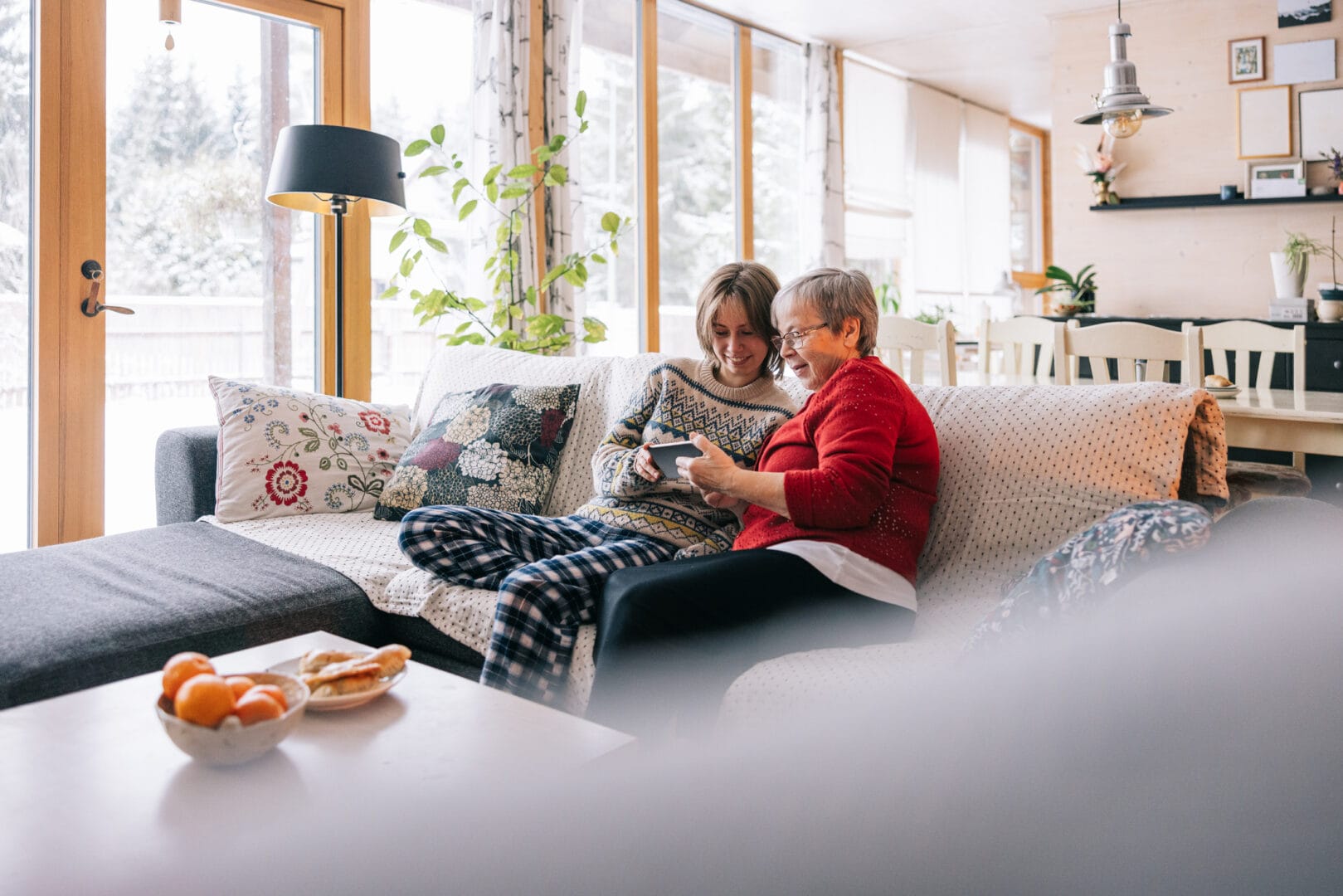As winter approaches, it's essential to prepare both homes and seniors for the unique challenges this season presents. Cold months can bring a range of hazards, from slippery sidewalks to the risk of hypothermia, and the impact of isolation on mental health. Understanding these risks and taking proactive measures to address them is crucial for ensuring the safety and well-being of our senior loved ones. Here, we explore a wide range of winter safety tips for seniors, from preparing their living spaces to creating emergency plans and kits.
Common Winter Hazards
- Falls: Icy sidewalks and slippery surfaces increase the risk of falls for seniors, leading to serious injuries like fractures, sprains, or head trauma. Reduced balance and mobility in older adults make them more susceptible to such accidents during the winter months.
- Hypothermia: Older individuals have a decreased ability to regulate body temperature, putting them at higher risk of hypothermia, a potentially life-threatening condition. Prolonged exposure to cold temperatures can lead to dangerous drops in body heat, leading to confusion, dizziness, and even unconsciousness.
- Isolation: Cold weather often forces seniors to stay indoors, leading to feelings of isolation and loneliness. Reduced social interactions can negatively impact mental health, causing depression and anxiety.
- Carbon monoxide poisoning: Carbon monoxide is a colorless, odorless gas that can be deadly. It is produced by burning fuel, such as natural gas, propane, and wood. Older adults are at increased risk of carbon monoxide poisoning because they may have heart or lung conditions that make them more susceptible to its effects.
- Frostbite: Frostbite is a serious condition that occurs when skin and tissue freeze. It is most common on the ears, nose, fingers, and toes. Older adults are at increased risk of frostbite because they are more likely to have poor circulation.
The Impact of Cold Weather on Senior Health
- Cardiovascular Health: Cold weather can cause blood vessels to constrict, elevating blood pressure and putting additional strain on the heart, especially for seniors with pre-existing cardiovascular conditions.
- Respiratory Issues: Cold air can exacerbate respiratory conditions like asthma, bronchitis, or chronic obstructive pulmonary disease (COPD) in older adults, leading to breathing difficulties.
- Immune System: Seniors' immune systems may weaken during the winter, making them more susceptible to infections, including the flu and the common cold.
Indoor Winter Safety Tips
1. Check and Maintain Heating Systems for Optimal Function
- Schedule a professional inspection of heating systems before winter begins to ensure they are in good working condition.
- Replace air filters regularly to improve indoor air quality and maintain heating efficiency.
- Consider installing a programmable thermostat to regulate indoor temperatures efficiently and save on energy costs.
2. Winter Proof Rooms
- Insulation: Properly insulate doors, windows, and walls to keep the cold air out and the warmth inside, promoting a comfortable living environment.
- Draft Proof: Seal gaps and cracks in windows and doors with weatherstripping or caulking to prevent cold drafts from entering the house. Use draft stoppers at the base of doors to further prevent cold air from seeping into rooms.
3. Ensure Sufficient Indoor Lighting as Days Get Shorter
- Replace burnt-out light bulbs promptly to maintain a well-lit environment, reducing the risk of falls and promoting overall safety.
- Consider using brighter LED bulbs that consume less energy and last longer.
- Add additional lighting in dimly lit areas to ensure visibility and prevent accidents.
Outdoor Winter Safety Tips
4. Prepare Walkways and Driveways to Prevent Slips and Falls
- Shoveling and de-icing: Keep walkways and driveways clear of snow and ice by promptly shoveling after each snowfall. Use environmentally friendly ice melt or sand to provide traction and prevent slipping.
- Proper Lighting: Ensure outdoor areas are well-lit during the winter months, especially in the evenings, to improve visibility and reduce the risk of accidents.
- Handrails and Grab Bars: Install sturdy handrails along staircases and ramps to assist seniors and individuals with limited mobility in navigating slippery outdoor surfaces.
5. Maintain Gutters and Roofs to Avoid Winter Damages
- Clean Gutters: Clear debris and leaves from gutters and downspouts to prevent ice dams from forming. Clogged gutters can cause water to back up and lead to roof leaks and potential damage.
- Inspect the Roof: Before the winter sets in, inspect the roof for loose or damaged shingles and repair them promptly. This will prevent leaks and potential structural issues during heavy snowfall.
- Snow Removal: Safely remove excess snow from the roof to prevent excessive weight that could lead to structural damage.
6. Secure Outdoor Areas and Equipment for Winter
- Store Outdoor Furniture: Safely store outdoor furniture and equipment during the winter to protect them from harsh weather conditions and extend their lifespan.
- Winterize Plants: Prune and protect vulnerable plants from frost and freezing temperatures by covering them with burlap or frost blankets.
- Shut Off Outdoor Water Sources: Disconnect and drain hoses, and shut off outdoor water sources to prevent frozen pipes and potential damage to the water system.
7. Prepare Winter Safety Kit: What to Include
- Emergency Blankets: Keep warm, reflective emergency blankets to retain body heat in case of prolonged exposure to cold.
- Hand Warmers: Provide disposable hand warmers to keep extremities warm during outdoor activities.
- Flashlights and Batteries: Include a reliable flashlight with extra batteries to navigate during power outages or emergencies.
- First Aid Supplies: Stock the kit with bandages, antiseptic wipes, pain relievers, and any necessary prescription medications.
- Non-Perishable Food and Water: Pack energy bars, canned goods, and bottled water to sustain individuals during unexpected weather-related disruptions.
- Portable Phone Charger: Include a portable power bank to ensure access to communication in case of power outages.
8. Create a Customized Safety Kit Based on Individual Needs
- Medical Requirements: Individuals with specific medical needs should consider including necessary medical supplies, such as insulin and prescription medications.
- Special Considerations: Families with infants, elderly members, or individuals with disabilities should cater the kit to address their unique requirements, such as diapers, extra warm clothing, or assistive devices.
- Pet Supplies: If there are pets in the household, include pet food, water, and any necessary medications or supplies for their well-being during emergencies.
Adapt winter safety tips for seniors to protect seniors during the winter. From understanding common hazards to preparing homes and creating emergency plans, readers are empowered to ensure safety and comfort for their loved ones. By taking proactive steps, seniors can face the challenges of winter with confidence and well-being.





